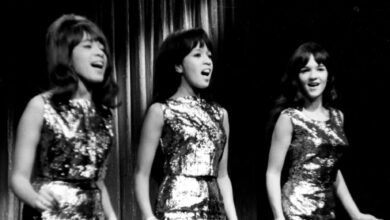Lionel Richie’s Moving “I Am…I Said” Rendition Touches Neil Diamond and Meryl Streep
Lionel Richie’s performance of “I Am…I Said” at the 2011 Kennedy Center Honors stands as an exemplary moment in contemporary music history, marrying emotional depth with the celebratory spirit of honoring a musical titan, Neil Diamond. This event was not merely a showcase of vocal prowess but an intricate homage to a fellow artist whose influence spans generations. Neil Diamond, known for his commanding presence and emotional storytelling, has captured the hearts of millions through his timeless songs. Richie’s decision to honor Diamond by performing this particular piece highlights the artistry that underpins both their musical legacies.
The song “I Am…I Said,” a significant entry in Diamond’s discography, was released in 1971 and reflects a poignant narrative that speaks to the complexities of human emotion, particularly themes of solitude and the quest for self-identity. Surrounded by a backdrop of rich instrumentation, Diamond’s lyrics evoke a sense of longing and introspection that resonates with many listeners. Richie’s rendition of the song was not a mere reproduction; it was an interpretation infused with his distinct soulful style and a fresh emotional perspective. His performance brought a new layer of vulnerability to the already rich framework of the song, allowing it to resonate anew with the audience.
Richie’s evolution as an artist began with The Commodores, a group that pioneered a unique blend of soul and funk music in the 1970s. His transformation into a solo superstar was marked by a slew of hits that showcased his versatile vocal abilities and knack for songwriting. As he transitioned into a solo career, Richie not only maintained his connection with the fans but also broadened his artistic palette, embracing elements of pop, country, and R&B. This journey reflects the adaptive nature of his artistry, as he continually sought new ways to express his musical voice while maintaining a thread of personal narrative and connection with his audience.
In his performance, Richie made a notable alteration to the lyrics, including a reference to his own hometown of Tuskegee, Alabama. This personal touch not only paid tribute to his roots but also demonstrated the transformative power of music. It showcased how artists can weave their personal histories into the fabric of their performances, creating an intersection where individual experiences meet universal truths. This ability to personalize a song highlights the connection between the artist and the audience, fostering a shared understanding that transcends individual backgrounds.
The Kennedy Center Honors ceremony, renowned for celebrating artistic excellence, provided a fitting context for Richie’s heartfelt tribute. Surrounded by a distinguished audience of artists and cultural leaders, the atmosphere was charged with a mixture of reverence and celebration. The presence of Neil Diamond—the honoree—added an additional layer of emotional weight to the performance. Witnessing a fellow artist paying homage must have stirred a complex mix of pride and nostalgia within Diamond, as the performance served as a reminder of his profound impact on the music industry.
Audience reactions during Richie’s performance were palpable, ranging from tearful appreciation to enthusiastic applause, illustrating the emotional resonance of his tribute. Personalities like Meryl Streep, a powerhouse in the acting world, were visibly moved by the connection established through music. Her presence underscores the idea that music can foster unity among artists across disciplines, creating a moment of collective acknowledgment of talent, resilience, and shared experiences.
Following the Kennedy Center performance, both Lionel Richie and Neil Diamond have continued to influence the music scene significantly. Diamond’s decision to retire from touring in 2018 marked a poignant era for his fans, yet his catalogue remains a vital part of the musical landscape, impacting listeners and new artists alike. Richie has remained a vibrant force in the industry, utilizing platforms such as “American Idol” not just to perform but to mentor and nurture the next generation of talent. This act of mentorship signifies the ongoing cycle of artistic legacy, where the wisdom and experiences of seasoned artists are shared with emerging musicians.
Richie’s profound impact can be witnessed in his ability to connect with a diverse cross-section of the audience, effectively bridging the gap between different musical generations. By preserving traditional storytelling while embracing new musical trends, he remains a respected figure and a source of inspiration for aspiring artists. His performances continue to evoke strong emotions, celebrating the beauty of human connection through music—the very essence that brings people together.
Reflecting on that memorable night at the Kennedy Center, it is clear that Lionel Richie’s performance transcended the individual act of singing; it transformed into a collective experience rooted in reflection and connection. Great artists possess the ability to elevate the underlying message of a song, allowing the audience to engage deeply with the artist’s interpretation. Richie’s personalization of Diamond’s work showcased the powerful, almost alchemical process of reinterpretation in music, creating an emotional experience that lingers long after the final note fades away.
Ultimately, Lionel Richie’s rendition of “I Am…I Said” serves as a timeless reminder of the power of music to evoke deep emotional responses, create connections, and honor artistic legacies. This performance illustrates the significant role that celebration and tribute play in the evolution of music, connecting past and present while inspiring future generations. Through his artistry, Richie not only honors Neil Diamond but also reinforces the eternal bond that music fosters among humanity, bridging the gaps and enriching lives through shared experience and emotion.



